Towing Checklist: 4 Things to Check Before you Tow!
Regular maintenance carried out? Check. Tires in good working order? Check. Registration and insurance up to date? Check. Getting all of these things right before you do any towing is important. We know that when you are hauling a trailer, you need to take extra safety precautions. That is why we have put together this straightforward 4 step towing checklist. Following the steps outlined below will help ensure that your complete towing setup is ready to hit the road when you are.
Step 1 – Regular maintenance
Regularly maintaining both your tow vehicle and trailer is essential. Carrying out routine inspections and scheduling regular services will help reduce the likelihood of breakdowns as well as reduce dangers associated with wear and tear to your towing setup. As we’ve discussed before, towing a load (boat, RV, car trailer, etc.) comes with added responsibility in terms of road safety. Regular maintenance should be a top priority within your towing checklist. That way you can ensure that you are not a danger to yourself or other road users because of faulty equipment.
Step 2 – Tire check
Are you driving on unsafe tires? In most states, the law stipulates that your tire tread depth is at least 2/32". However, it’s also important to know that your tires’ performance can be impacted by rain and snow before their tread depth is considered legally unsafe. Don’t have a tire tread depth gauge? You can use a penny! Place your penny into the tread grooves at several spots around the tire. You still have more than 2/32" of tread depth remaining if the tread covers part of Abe’s head.
Step 3 – Brakes and suspension
Part of your towing checklist before you get going should be to check that you can safely stop. It’s important to make sure that your brake pads are in good working order. Not only that, if you’re using a brake controller, this needs to be setup correctly so that your trailer shares the same braking load as your tow vehicle. This is a critical step because if a difference in braking capacity can result in your trailer brakes overheating which can lead to further safety issues, such as brake fade and brake fluid boil.
When performing a suspension check as part of your towing checklist, it’s important to inspect for signs of wear and tear. Look for cracks on things like: bolts, springs, pins, bushes as well as on any other moving parts. Don’t forget: in order to properly check your breaks and suspension your vehicle needs to be raised and tires removed.
Step 4 – Tow hitch and coupling
The tow hitch is arguably the most important of your overall towing setup as it is the only connection between your tow vehicle and trailer. As such, it needs to be a priority within your towing checklist. On the coupling housing, check that your adjustment screw is set correctly. The adjustment screw ensures a tight fit between coupling and tow ball. If it’s not set correctly, the trailer can become unattached during operation. It’s also important to perform a visual inspection for signs of wear and tear. Look for any signs of rust, fatiguing or cracks in the housing.
The good news is that BulletProof Hitches™ are designed to be the last hitch you will ever need to buy. Every one of our hitches is engineered using the absolute best in materials, equipment, and highly skilled labor.
Having a great towing setup is important. But what’s also important is that this gets checked regularly. That way you will ensure that when it’s time to tow, you’re ready to go!

